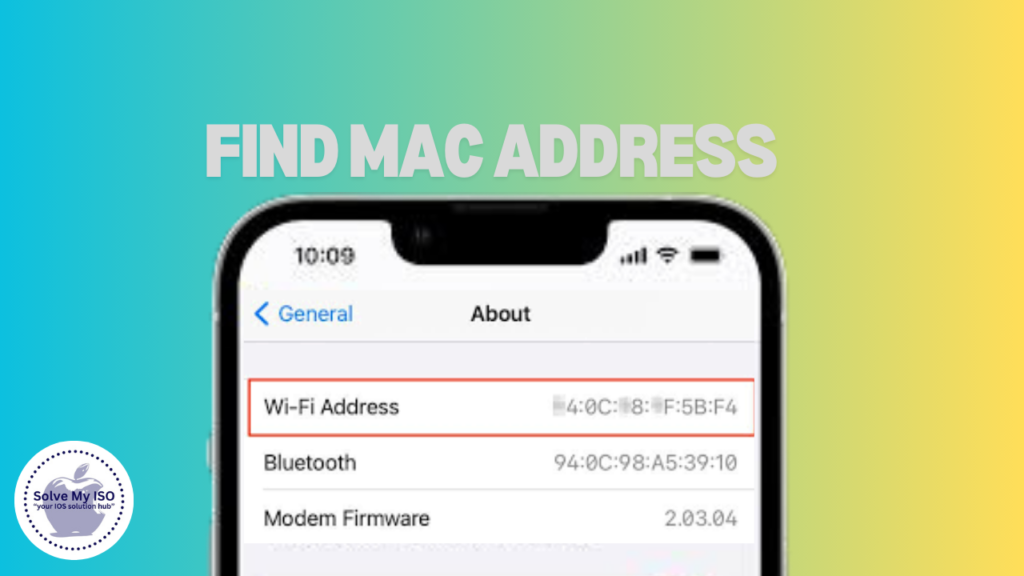In today’s interconnected world, understanding the technical elements of your devices can be incredibly beneficial. One such element is the MAC address, a unique identifier for networked devices. Whether you’re troubleshooting network issues or enhancing your home network security, knowing how to find the MAC address on your iPhone is essential. This comprehensive guide will walk you through everything you need to know, from understanding what a MAC address is to finding it using various methods.
Understanding MAC Addresses
What is a MAC Address?
A MAC (Media Access Control) address is a unique identifier assigned to network interfaces for communications on the physical network segment. Think of it as a digital fingerprint for your device’s networking hardware, allowing it to be distinctly recognized within a network.
Differences Between MAC Address and IP Address
While both MAC and IP addresses serve to identify your device within a network, they function differently:
- MAC Address: Hardware-based and remains constant regardless of the network.
- IP Address: Assigned by the network and can change depending on the network you connect to.
Why is a MAC Address Important?
Understanding your MAC address is crucial for several reasons:
- Network Security: Use MAC addresses to implement filtering and restrict access.
- Troubleshooting: Identify and diagnose network issues.
- Device Management: Track and manage devices connected to your network.
Methods to Find MAC Address on iPhone
Using the Settings App
Step-by-Step Guide with Screenshots
- Open Settings: Locate the ‘Settings’ app on your iPhone’s home screen and tap to open.
- Navigate to General: Scroll down and tap on ‘General’.
- Access About: Tap on ‘About’ at the top of the screen.
- Find the MAC Address: Scroll down to the ‘Wi-Fi Address’—this is your iPhone’s MAC address.
Explanation of Each Step
Each step is designed to guide you seamlessly through the iPhone interface, ensuring you can easily locate your MAC address without unnecessary complexity.
Troubleshooting Common Issues
If you can’t find the MAC address:
- Ensure your iPhone is running the latest iOS version.
- Restart your device and try again.
- Check for any restrictions that might hide the MAC address in settings.
Using the About Section
Detailed Steps to Navigate to the “About” Section
The ‘About’ section in your iPhone settings serves as a repository for all your device-specific information:
- Open the Settings app.
- Tap ‘General’.
- Tap ‘About’.
- Locate the ‘Wi-Fi Address’.
Importance of the “About” Section in iPhone Settings
The ‘About’ section provides comprehensive details about your device, from software versions to unique identifiers like the MAC address.
Verifying the MAC Address
To ensure you have the correct address:
- Match it with the address listed on your router’s connected devices.
- Use a network tool to cross-verify.
Using a Router or Network Management Tool
How to Access the Router Interface
- Open your web browser and type your router’s IP address (usually found on the router label).
- Log in with your credentials.
- Navigate to the connected devices section.
Finding the iPhone’s MAC Address Through the Router
Your router’s interface will list all connected devices along with their MAC addresses. Locate your iPhone in this list.
Using Third-Party Network Management Tools
Network tools like Fing or NetSpot can help identify and list all devices connected to your network, including their MAC addresses.
Advanced Techniques and Considerations
Using a Computer and Third-Party Software
Introduction to Third-Party Software Options
Tools like iMazing or MacX MediaTrans allow you to manage your iPhone from your computer, including finding the MAC address.
Step-by-Step Guide on Using These Tools
- Connect your iPhone to your computer.
- Open the third-party software.
- Navigate to the network settings or device details.
- Locate the MAC address.
Pros and Cons of Using Third-Party Software
Pros:
- Comprehensive device management.
- Additional features beyond finding the MAC address.
Cons:
- Potential cost for premium features.
- Requires installation and setup.
MAC Address Filtering and Network Security
Explanation of MAC Address Filtering
MAC address filtering allows you to whitelist devices that can connect to your network, bolstering security.
How to Implement MAC Address Filtering on Your Network
- Access your router’s interface.
- Navigate to the security settings.
- Enter the MAC addresses you wish to allow.
Enhancing Network Security Using MAC Addresses
Using MAC address filtering, along with other security measures like WPA3 encryption, significantly enhances your network’s defense against unauthorized access.
Examples of Specific Scenarios Where Knowing the MAC Address is Crucial
- Setting up a secure home network: Implementing MAC address filtering.
- Troubleshooting connectivity issues: Identifying the precise device causing problems.
- Network management: Keeping track of all devices on your network.
Conclusion
Understanding how to find the MAC address on your iPhone can empower you to take full control of your network settings, enhance security, and streamline troubleshooting processes. By following the detailed steps provided in this guide, you’ll be equipped with all the knowledge you need to manage your device effectively.
Stay proactive about your network management and enjoy the benefits of a secure and efficiently run digital environment.
By adopting these practices, you not only become more knowledgeable but also gain a significant edge in ensuring your network operates smoothly and securely. For more tips and insights, stay tuned to our blog and keep exploring the potential of your iPhone.
